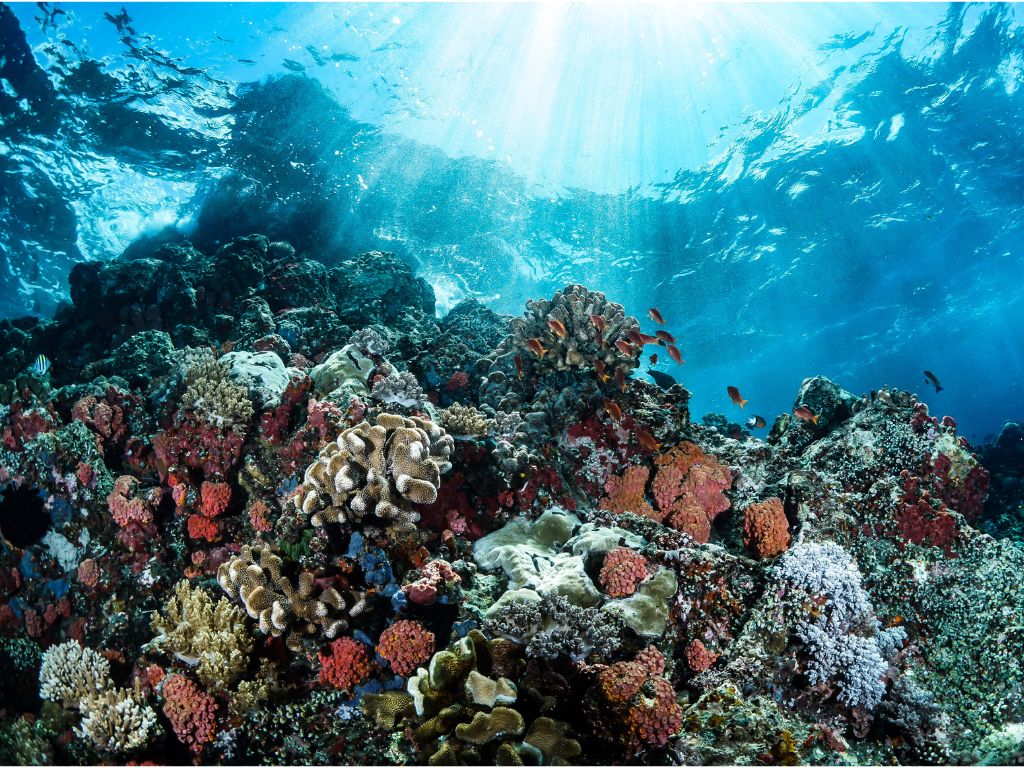Life under water is quite fascinating, so much so that more than 80% of the ocean still remains unexplored by humans due to insufficient technology, high costs as well as all the unknown dangers of the ocean. Marine ecosystems, consisting of plants and animal life, are essential for our planet’s survival and for combating climate change. Coral reefs are another integral part of marine ecosystems and it is important to understand what they are and how they contribute positively to our environment.
__
What Are Coral Reefs?
A coral reef is a colony of hundreds of thousands of individual animals called coral polyps. These form when free-swimming coral larvae get attached to rocks or other hard surfaces underwater, mainly along the coastlines of islands and continents. These polyps are usually small but they form large structures underwater comprised of the skeletons of marine invertebrates. A singular polyp has only one opening which is used for consuming food as well as excreting waste. This opening is covered with tentacles to capture its food, keeping clear of debris and defending oneself from any danger.
Corals feed either on small marine life such as fish and plankton and catch them using their tentacles attached at the opening, or on algae called zooxanthellae, which are a great source of energy to them. Hence, corals can be either carnivorous or herbivorous. Another interesting fact about corals is that some of the species are hermaphrodites or bisexual, meaning one coral polyp produces both eggs and sperms at the same time. Other species are gonochoric, meaning that the polyps produce either the eggs or the sperm, but not both. In this case, neighbouring reefs rely on each other for successful reproduction.
Soft Corals And Hard Corals
There are thousands of species of corals but they can be broadly divided into soft corals or hard corals. Soft corals do not form reefs but this does not mean that they are not beneficial to the marine ecosystem. They are a natural habitat for many fish and those near shores and coastlines act as natural barriers against strong waves, protecting land during natural disasters such as typhoons, cyclones, storms, or floods. Coral reefs provide a buffer against 97% of wave energy to the shores while helping prevent loss of life and property as well as erosion.
Hard corals are formed when the polyps absorb or extract calcium carbonate (CaCO3) from the seawater to create a durable and rock-hard exoskeleton to protect the bodies of the polyps, which are typically very soft. These hard corals are more likely to be found in deep seas. Even hard corals are important as they have some of the same impacts on our ecosystem and biodiversity as soft corals.
You might also like: 5 Coral Reefs That Are Currently Under Threat and Dying
How Do Coral Reefs Contribute to the Environment?
Coral reefs are one of the oldest ecosystems in the ocean and it can take thousands of years for the full development of a coral reef from the first formation of a polyp from colonising larvae. Being such a complex ecosystem, they provide a home to thousands of marine species and absorb the excess carbon dioxide in the water coining the term “rainforests of the sea”.
Being their natural habitat, coral reefs support millions of species we know about as well as those yet to be discovered: we are talking about approximately 4,000 species of fish, 800 species of hard corals, and hundreds of other unknown species. These corals are also a source of abundant minerals which are a source of food and provide us with existing as well as potential medicines important in treating rare and malignant diseases like cancer, arthritis, and bacterial infections.
Coral reefs also make for beautiful tourist attractions as they are present along coastlines and around islands, hence bringing business to small towns and local entrepreneurs.They also have cultural significance to indigenous communities all over the world as they have more knowledge about the formation, development as well as the ecosystem of the reefs. Paintings of corals and other marine life can be found on ancient rocks along with songs and stories that illustrate the importance of the reefs to indigenous people most of which have been passed down from generations.
Finally, they are significant for economic growth as they generate US$2.7 trillion in revenue every year, mainly for the food, tourism, and pharmaceutical industries.
Conclusion
There is an urgent need to address the threats they are facing due to the all-encompassing consequences of climate change.
The destruction of our mangroves is affecting corals. Mangroves are beneficial as they naturally absorb the sediment and nutrients that are typically present in marshlands but due to their destruction the corals are being suffocated with all the silt and algae.
Coral reefs undergo a natural process of bleaching when water temperatures are warmer in the summer. But the increasing number of heatwaves in recent years is affecting a larger area of the reefs.

Impact of heat stress on coral reefs in different regions. Image: Our World in Data.
This has now become a mass bleaching event with corals being affected in many regions over the world such as the Great Barrier Reef in the Pacific, reefs around Indonesia in the Indian Ocean, around the Caribbean Islands and some other regions of the Pacific, leading to the decrease as well as the death of our coral cover.

Life Below Water. Image: UNEP.
Given that only 20% of our ocean has been mapped and studied, it is difficult to understand the real scale of destruction happening to these ecosystems. There is a plan to map out all coral reefs on our planet from space. These maps will not only report on the location, size, and other physical characteristics of corals but also provide information for monitoring bleaching and other changes harming their well-being. This will enable us to design a better approach towards understanding as well as protecting our corals which as we know are so crucial for the health and security of the Earth.
You might also like: Improving the Resilience of Coral Reefs


















